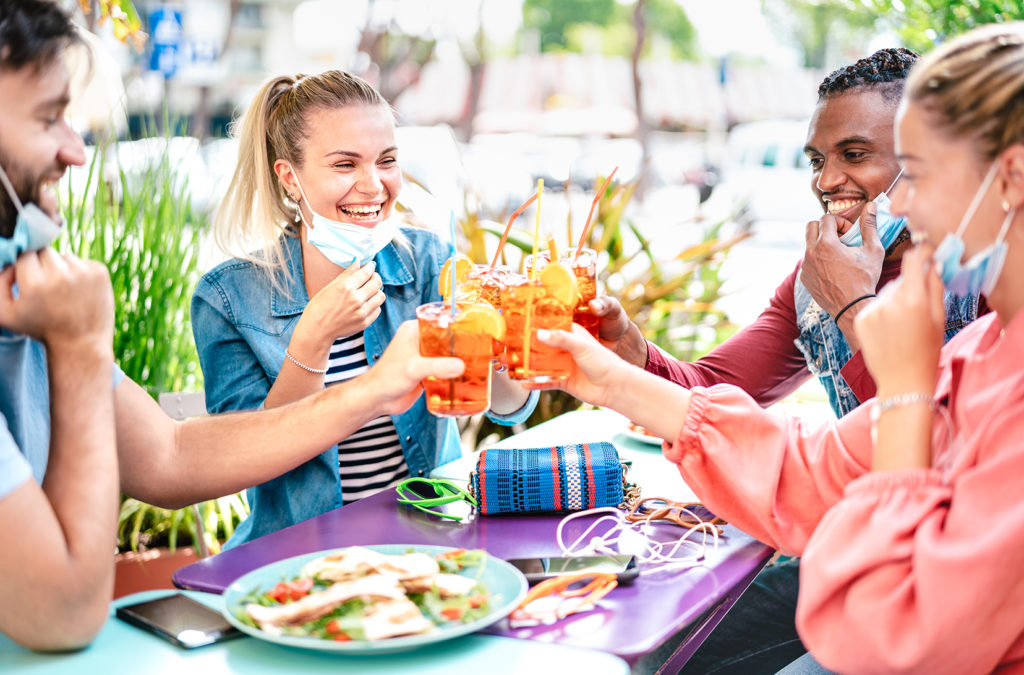[vc_row][vc_column][vc_column_text]The year 2020 has brought with it many changes, whether social or medical, the happenings of the last few months will have a lasting impact on the food and hospitality industry and the consumers that make use of it.
Most impactful of all the events has, of course, been COVID-19. With the pandemic came a change in the way consumers socialized, ate and spent their money. For the first time in many years, consumers have been forced to change their habits. In turn, businesses need to change theirs to suit.
Alongside changes in their operations, the technology they use and the way they serve customers, brands must change their approach towards loyalty if they’re to continue earning it as we move into 2021. Offering greater flexibility around reward redemption, for example, will be appreciated if customers are struggling to get out to claim them.
In the past, the emphasis has been on converting new customers into loyal followers. While the goal of gaining fresh loyalty is still important, it is now necessary to turn focus towards those whose loyalty has already been gained. The reason is simple – to dissuade them from moving onto new brands. McKinsey research has suggested that 75% of Americans have altered some of their brand preferences during the pandemic. Once ‘normal’ life resumes, it’s unlikely that these consumers will switch back to past preferences, so all efforts should be made to keep customers close and retain their loyalty. How can that be achieved?
Display empathy
Consumers have never been so watchful as they are now. They’re paying close attention to brands and the way that they‘re responding and reacting to world events. How quickly are they able to adapt and what support are they seen to give other brands or the community? A survey carried out by QikServe and Eagle Eye over the Summer showed that 65% of consumers were more likely to trust a business after lockdown ends that supported their community, staff and other frontline workers. This is especially important for enterprise size businesses, with the capacity to give back to those struggling more than they are.
Passing meals onto medical staff, donating to community charities and switching to local suppliers can all show customers that the brand is invested in the wellbeing of others outside of their own company. At the same time, looking after the welfare of employees, keeping them in employment if possible, and putting policies in place that protect them from the virus, is essential.
Keep talking
QikServe’s research showed 58% of consumers will remain loyal to companies that have kept them informed with timely, relevant communications during this time. Reaching out is simple enough, but of course, those communications also need to be relevant and timely.
Brands should be in contact with customers to let them know how much they appreciate and care about them — even if present circumstances mean they’re spending less than in the past. The belief must be that their outlay will increase again in the future and that understanding now, will be remembered when it matters.
Restrictions on movement and socializing mean that customers are unable to engage with brands on-site. They’re looking to replace that and are turning to social media to keep up interactions. Brands must keep their social media presence active and engaging. Unlike past communications and posts, sales chatter should be largely avoided. The tone should be kept light, the language, empathetic and the content, socially conscious.
Be smooth
Optimizing the ‘basics’ and having smooth operations has been an important component of the customer experience for some time. However, given the disruption of recent times, customers are (in some ways) more willing to forgive errors than they have in the past. The key is to address errors promptly, holding hands up and making moves to fix outstanding issues. That said, a brand which can offer a seamless customer experience will gain its customers’ confidence, strengthening their loyalty in the process.
Companies should focus on offering convenient, safe ways of transacting; providing technologies for customers wanting to order their food for takeout ahead of time, or order and pay at table solutions for those keen to eat/drink in-house. These are the frictionless-service options that customers want to see right now, and which have the power to win loyalty for the long–term. By reducing server contact, they give customers confidence that the business has care for their health and safety. More than that, they free staff up to focus on providing the smoothest, most enjoyable experience possible.
Above all, loyalty strategies in 2021 must keep convenience in mind. Whether it’s convenient communications, ordering and payment or on-site operations, any friction (which isn’t acknowledged and apologized for) may cause customers to switch to competitor brands. For any restaurants and food operators that haven’t yet formed a loyalty program, now is the time to do so. When designed well, it will keep revenues flowing and build a customer database that can be relied upon in even the harshest times. [/vc_column_text][/vc_column][/vc_row]





